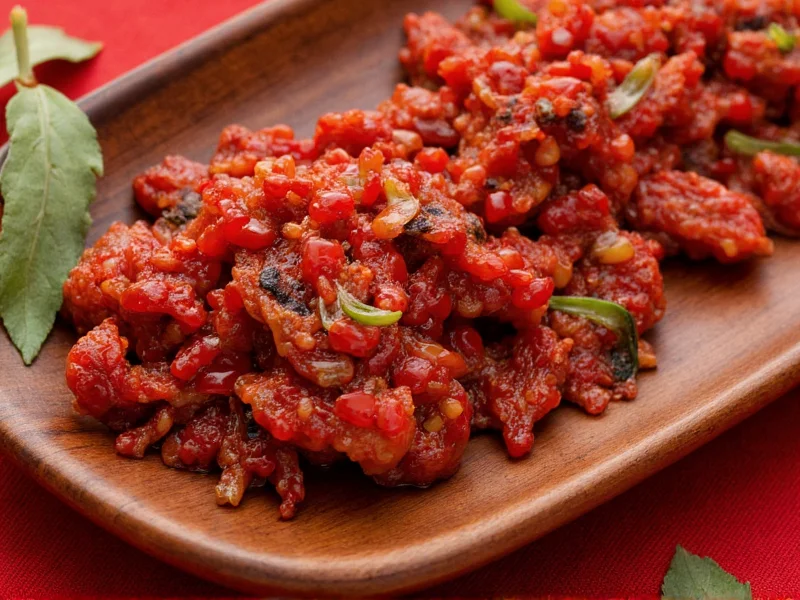When exploring Chinese regional cuisines, understanding what is the difference between Hunan and Szechuan cooking styles reveals fascinating culinary traditions that often get confused. Both represent two of China's eight great culinary traditions, yet they offer distinctly different dining experiences that go far beyond simple spiciness levels.
Origins and Historical Context
Hunan cuisine, also known as Xiang cuisine, originates from China's Hunan province in south-central China, an area with hot summers and humid conditions that influenced its preservation techniques. Szechuan (more accurately spelled Sichuan) cuisine comes from the mountainous Sichuan province in southwestern China, where the damp climate led to the development of warming, pungent flavors.
Flavor Profile Comparison
The most fundamental difference between Hunan and Szechuan flavor profiles lies in their approach to heat and complexity:
| Characteristic | Hunan Cuisine | Szechuan Cuisine |
|---|---|---|
| Primary Heat Type | "Gan la" (干辣) - Dry spicy heat | "Ma la" (麻辣) - Numbing spicy heat |
| Heat Source | Fresh red and green chili peppers | Dried chilies + Szechuan peppercorns |
| Additional Notes | Prominent sour elements (vinegar) | Complex sweet-sour-spicy balance |
| Color Appearance | Darker, oilier dishes | Bright red from chili oil |
| Texture Experience | Direct, immediate heat | Tingling, numbing sensation |
Ingredient Differences Explained
When examining what makes Hunan and Szechuan cuisine different at the ingredient level, several key distinctions emerge:
Hunan cooking relies heavily on fresh, pungent ingredients. Chefs use abundant fresh red and green chili peppers, garlic, and shallots. Vinegar plays a crucial role in balancing the intense heat, creating that signature sour-spicy combination. Smoked and cured ingredients feature prominently due to historical preservation needs in the humid climate.
Szechuan cuisine, by contrast, builds complexity through multiple layers of flavor. While it uses dried chilies for heat, the defining element is Szechuan peppercorns, which create that unique tingling sensation on the tongue. Fermented ingredients like doubanjiang (broad bean paste) and Pixian bean paste form the flavor foundation for many dishes. Ginger, garlic, and sesame oil contribute to the multi-dimensional taste profile.
Cooking Techniques and Popular Dishes
The difference between Hunan and Szechuan cooking techniques reveals why their dishes feel so distinct:
Hunan chefs typically use high-heat stir-frying and braising methods. Signature Hunan dishes include:
- Steamed Fish Head with Chopped Chili (Dòujiāo zhēng yú tóu)
- Hunan Smoked Pork (Xūn ròu)
- Chairman Mao's Red-Braised Pork (Máo shì hóngshāo ròu)
Szechuan cooking often employs techniques like "dry-frying" (gan bian) and "velveting" to create specific textures. Iconic Szechuan dishes include:
- Kung Pao Chicken (Gōngbǎo jīdīng)
- Mapo Tofu (Mápó dòufu)
- Dry-Fried Green Beans (Gān biān sìjìdòu)
Common Misconceptions Clarified
Many people wonder is Hunan food spicier than Szechuan - the answer depends on how you measure spiciness. Hunan cuisine generally delivers more straightforward capsaicin heat from fresh chilies, making it feel hotter to many Western palates. Szechuan cuisine's heat is more complex due to the numbing effect of Szechuan peppercorns, which can actually moderate the perception of pure chili heat.
Another frequent confusion involves the spelling - "Szechuan" is the older Wade-Giles romanization, while "Sichuan" represents the modern Pinyin spelling. Both refer to the same cuisine from China's Sichuan province.
How to Choose Between Hunan and Szechuan
When deciding between these two regional styles, consider your flavor preferences. Choose Hunan cuisine if you prefer:
- Direct, intense heat without numbing sensations
- Darker, oilier dishes with prominent sour notes
- More straightforward flavor profiles focused on fresh chili heat
Opt for Szechuan cuisine when you want:
- Complex flavor layers with the distinctive ma la sensation
- Bright red dishes with fermented bean pastes
- A balance of sweet, sour, salty, and spicy elements
Regional Variations Within Each Style
Understanding the difference between Hunan and Szechuan regional variations adds another dimension to your culinary knowledge. Hunan cuisine itself has three regional styles: Xiang River, Dongting Lake, and Western Hunan, each with subtle differences in ingredient usage.
Likewise, Szechuan cuisine varies between Chengdu-style (more complex, balanced flavors) and Chongqing-style (bolder, spicier, and oilier dishes). These regional distinctions explain why you might experience variations when ordering "Szechuan" dishes at different restaurants.











 浙公网安备
33010002000092号
浙公网安备
33010002000092号 浙B2-20120091-4
浙B2-20120091-4